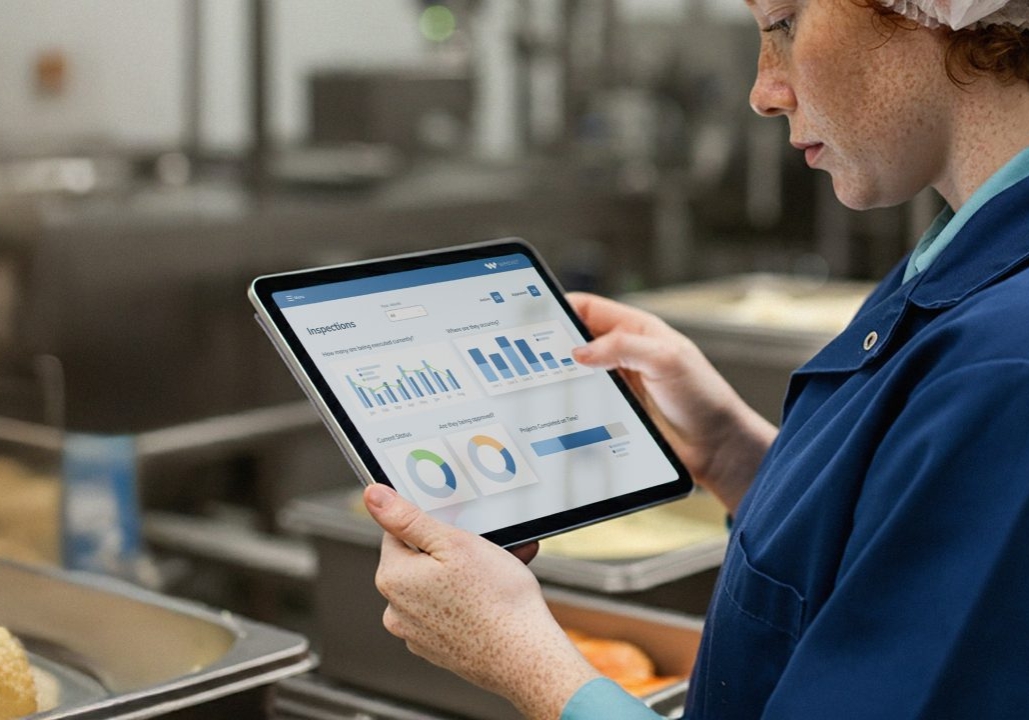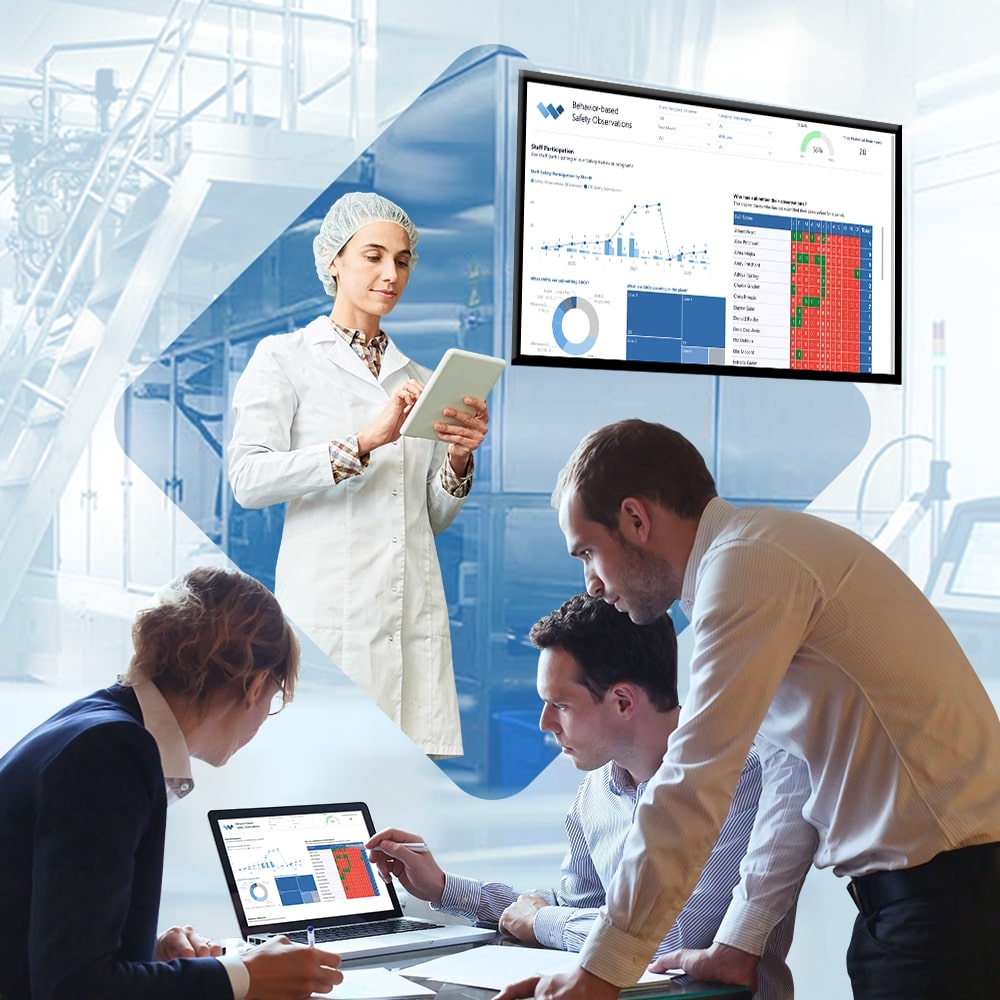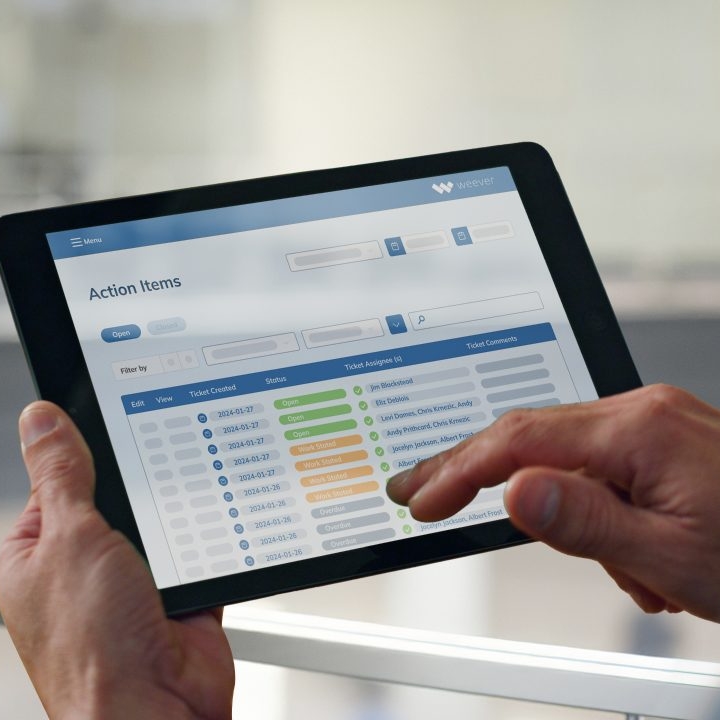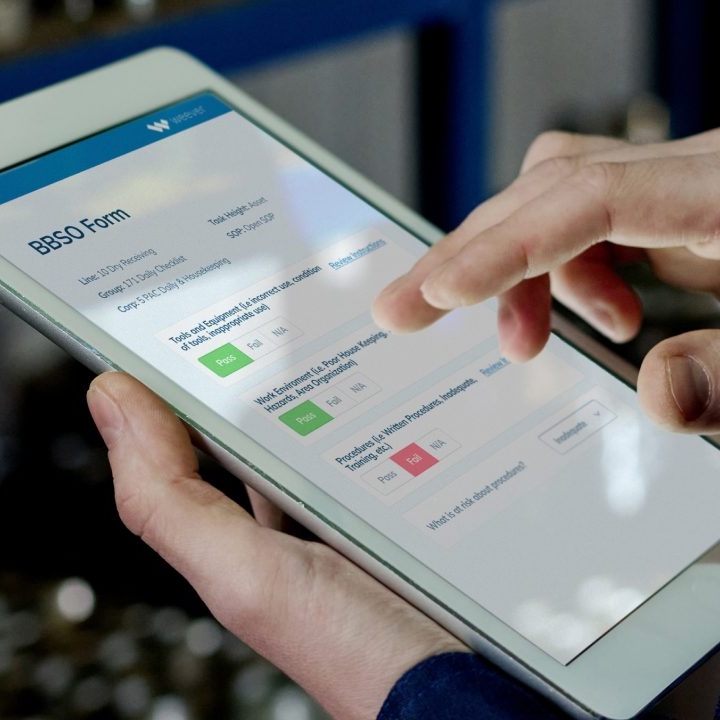Maximizing Productivity in Food Warehouses with Autonomous Maintenance: How Weever Makes It Possible
Maximize productivity in food warehouses with Weever's autonomous maintenance tools. Simplify tasks, automate workflows, and ensure compliance with hygiene standards.

The food industry faces unique challenges, from stringent hygiene standards and regulatory compliance to the need for precise inventory management and equipment performance. To meet these demands while minimizing downtime and equipment failures, food warehouses can benefit significantly from implementing autonomous maintenance.
Autonomous maintenance (AM) empowers operators to take ownership of routine maintenance tasks such as cleaning, inspecting, lubricating, and tightening equipment. When executed effectively, this approach not only reduces downtime but also enhances equipment reliability and extends its life. But how can food warehouses maximize productivity with autonomous maintenance, and how does Weever software ensure businesses stay ahead of emerging trends in the food industry?
Understanding Autonomous Maintenance in Food Warehouses
Autonomous maintenance is a key pillar of Total Productive Maintenance (TPM), focusing on empowering machine operators to perform basic maintenance activities rather than relying solely on maintenance teams. This hands-on approach involves a set of predefined steps, ensuring that equipment is kept in optimal condition and minor issues are addressed before they escalate into larger problems. Let's explore some autonomous maintenance steps:
- Initial Cleaning: Operators clean machinery to remove contaminants that could affect performance.
- Source Elimination: Identify and resolve contamination sources to prevent further issues.
- Standardization of Cleaning, Inspecting, and Lubrication (CIL): Set clear schedules and guidelines for cleaning and lubrication tasks.
- Inspection: Regular inspections of equipment to identify early signs of wear or malfunction.
- Autonomous Inspection and Ownership: Operators perform routine checks, taking responsibility for the equipment's performance.
- Standardization and Continuous Improvement: Documenting best practices and refining them based on new data and experiences.
Food warehouses, in particular, must ensure that maintenance practices are aligned with strict hygiene regulations, such as those set by the FDA or other local authorities. Any deviation could lead to contamination, product recalls, or operational shutdowns. Let's explore how autonomous maintenance examples can be implemented in food warehouses with the help of Weever software.
1. Simplifying Autonomous Maintenance for Food Warehouses
One of the biggest challenges food warehouses face is ensuring that autonomous maintenance steps are easy to implement and follow, especially given the complexity of food safety regulations. Weever's intuitive platform makes it simple for food warehouses to adopt these practices.
With Weever, food warehouse operators can easily navigate the system to create maintenance checklists, cleaning schedules, and inspection forms specific to their equipment and regulatory needs. The platform's user-friendly design ensures that even employees with minimal technical skills can quickly adapt, reducing the learning curve and minimizing the risk of errors.
By simplifying the implementation of autonomous maintenance, Weever enables food warehouses to focus on their core activities-efficiently handling perishable products, maintaining proper storage conditions, and ensuring that operations comply with food safety standards.
2. Enhancing Productivity
Automation is crucial in food warehouses, where time and accuracy are key to maintaining productivity. Weever's automated workflows and action items allow businesses to seamlessly integrate autonomous maintenance tasks into their daily operations.
For instance, Weever can automate the scheduling of routine maintenance activities like cleaning and lubrication based on equipment usage and predefined intervals. In a food warehouse setting, this could mean ensuring that equipment used in the handling of sensitive or perishable goods is cleaned and inspected on a strict schedule to avoid contamination.
Automating these workflows not only ensures that maintenance tasks are performed consistently but also reduces the administrative burden on managers. This allows food warehouse teams to focus on more strategic areas, such as optimizing storage conditions, improving inventory turnover, and ensuring compliance with food safety regulations. Moreover, Weever's ability to automate action items ensures that businesses stay aligned with the latest autonomous maintenance trends, such as the adoption of new cleaning technologies or inspection tools.
3. Leveraging Data to Stay Ahead
In the food industry, having data-driven insights into equipment performance is critical for staying ahead of issues that could disrupt operations. Weever's analytics tools provide food warehouses with comprehensive insights into the effectiveness of their autonomous maintenance strategies, enabling them to make informed decisions about their maintenance schedules and practices.
For example, Weever can track the frequency and results of equipment inspections, highlighting patterns that could signal a need for adjustments to cleaning schedules or early interventions before equipment fails. By analyzing this data, food warehouses can stay ahead of emerging maintenance trends, such as the introduction of predictive maintenance technologies or new hygiene standards.
Furthermore, Weever's analytics capabilities allow food warehouses to optimize their autonomous maintenance efforts based on real-time performance data, helping businesses improve productivity and reduce downtime.
4. Keeping Teams Informed and Agile
In a food warehouse, timely information is critical. Equipment failures or hygiene issues can have a direct impact on product safety and shelf life. Weever's real-time reporting features keep food warehouse teams informed about the status of their maintenance activities, allowing for rapid adjustments as needed.
For instance, if an operator detects an anomaly during a routine inspection, such as abnormal vibrations in a conveyor belt, Weever can immediately alert the appropriate team members. This real-time communication enables businesses to take swift corrective action, preventing potential equipment failures and minimizing downtime.
Additionally, Weever's real-time reporting allows warehouse managers to monitor the overall effectiveness of their autonomous maintenance efforts, ensuring that maintenance tasks are performed on time and that any deviations are promptly addressed.
5. Efficient Implementation of Autonomous Maintenance
Rolling out a new maintenance strategy in a food warehouse can be complex, especially when factoring in regulatory compliance and food safety requirements. Weever's structured rollout methodology ensures that food warehouses can efficiently implement autonomous maintenance practices without disrupting operations.
Weever provides a clear, step-by-step approach for rolling out new maintenance initiatives, from initial planning to full deployment. This methodology includes training for warehouse teams, ongoing support, and real-time monitoring to ensure that the new processes are implemented smoothly and effectively.
As new trends emerge, such as advancements in sanitation technologies or changes in food safety regulations, Weever's flexible platform allows food warehouses to quickly adapt their maintenance strategies, ensuring that they remain competitive and compliant with the latest standards.
Maximizing Productivity with Weever's Autonomous Maintenance Tools
Food warehouses face unique challenges in maintaining productivity, meeting hygiene standards, and ensuring regulatory compliance. Implementing effective autonomous maintenance practices can help these businesses optimize equipment performance, minimize downtime, and stay ahead of industry trends.
Weever software is the key to unlocking these benefits, offering an intuitive platform that simplifies maintenance tasks, automated workflows, provides valuable insights, and ensures real-time reporting. With Weever, food warehouses can implement autonomous maintenance efficiently, enabling them to stay competitive in a fast-paced, highly regulated industry.
By leveraging Weever's tools, food warehouses can maximize productivity, ensure compliance with stringent hygiene standards, and stay ahead of emerging trends in the food industry.
See how Weever's approach to maintenance is reshaping the food industry.
See how Weever's approach to maintenance is reshaping the food industry.
Continue Reading
"Having cloud-based forms on devices around the facility makes them so much more accessible, which makes it painless for operators to quickly provide a report."
Johanna Velez, VP Quality Assurance


"Weever is really user friendly and will have a massive positive impact on our operations and training team."
Mel Cadle - Op Ex Lead Process Engineer


"It's shifted our safety culture because now we are much more focused on what we should be looking at."
Kody Crossen, Operations Manager of EHS









